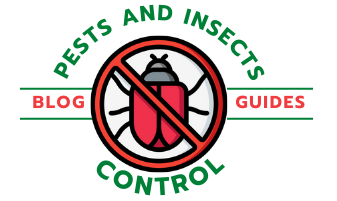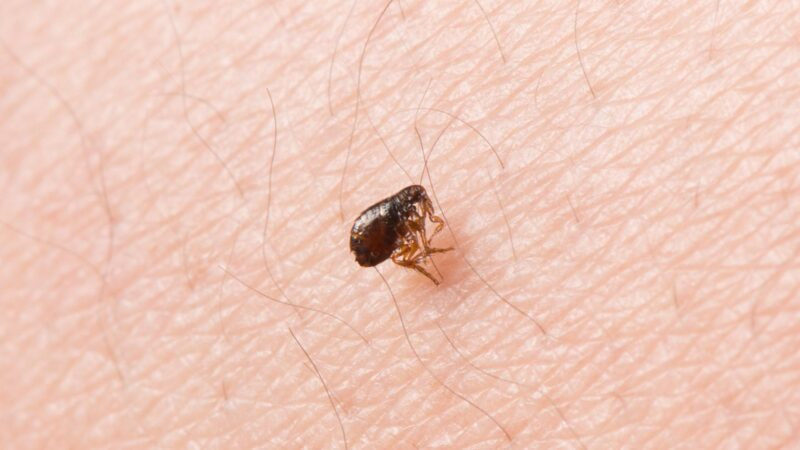If you find tiny black bugs crawling around your bed sheets, it can be an alarming experience. Are they bed bugs? Will they bite you? The first step is to determine if it is indeed a bed bug infestation. Take a close look at the bug, as adult bed bugs are typically around one fourth of an inch long with a reddish brown color, and resemble apple seeds.
If you find that the bugs instead have an orange tinge and appear more worm-like in shape, then chances are that it is carpet beetle larvae instead – these pests won’t bite but still must be dealt with to prevent damage to fabrics in your home.

Once you’ve identified the tiny black bugs on your bed sheets, it’s time to start researching the best ways to get rid of them from your home!
Unfortunately, adult carpet beetles, bed bugs, dust mites and other tiny black bugs may take over your home. Even if you’re careful not to leave any food out or bring in items from the outdoors, a bug infestation can happen to anyone.
These tiny bugs can bite and feed on your belongings and pets. Fortunately, you can avoid an infestation by staying vigilant and making sure your home is clean and free of clutter. Be sure to check for adult carpet beetles and bed bugs bites around your mattress regularly as these signs might be indicative of a carpet beetle infestation or a dust mite problem.
If you do spot any unwanted visitors such as these tiny black bugs, don’t wait – act fast before the population spreads!
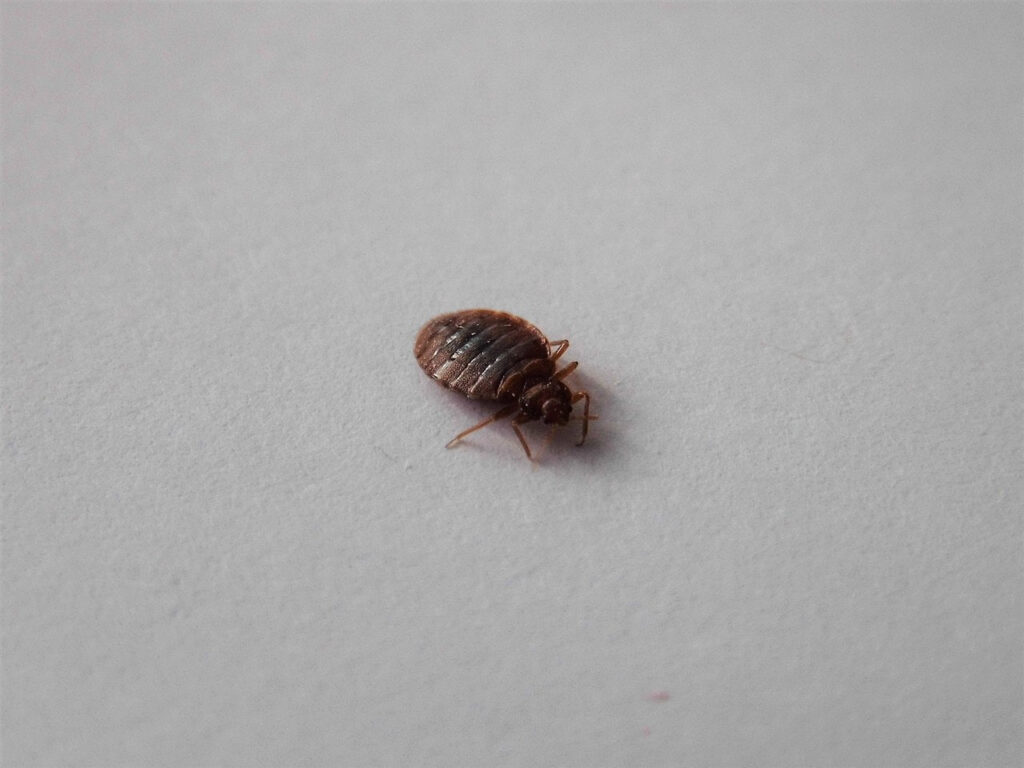
Tiny Black Bugs on Bed Sheets | Identification, Habitat, and Control
Black Carpet Beetle
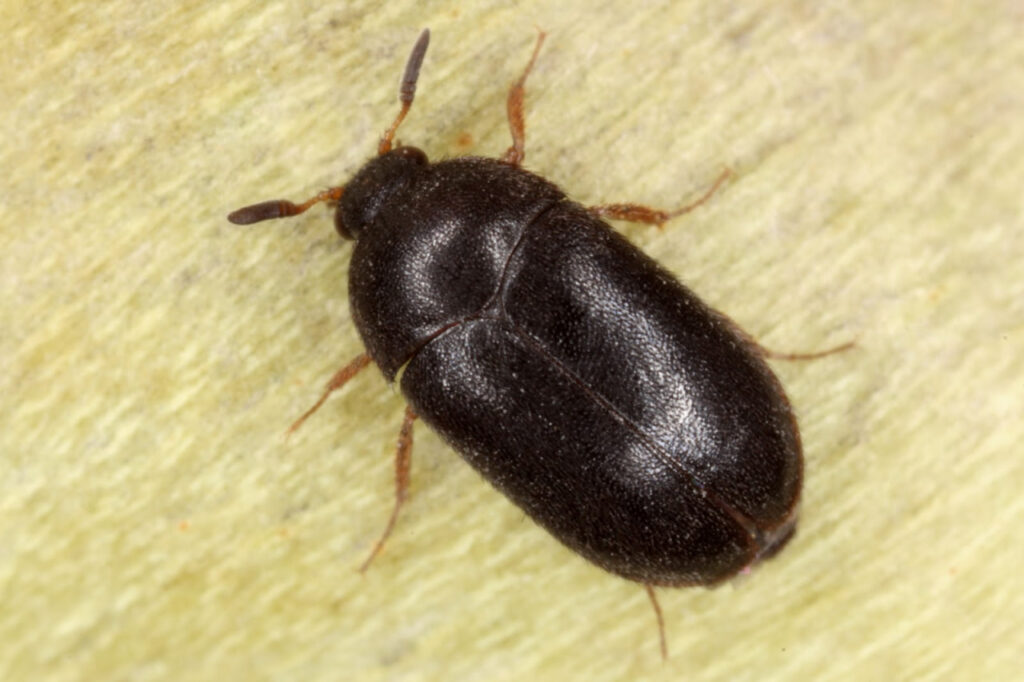
Ever find small black bugs around your home? Chances are, these unwelcome guests setting up shop in carpets and bed sheets could be the pesky carpet beetle. Getting its name from where it tends to hide out, this insect feeds on fabrics like wool and silk – making it a household nightmare that simply won’t quit!
With the ability to lay up to an alarming 100 eggs, ignoring a beetle infestation can quickly become disastrous. Taking swift action is key in order to prevent any invasion!
- The black carpet beetle is a small, dark-colored insect sporting an oval body and shiny exterior. These stealthy creatures bear three pairs of legs to traverse their environments as well as two prominent antennae that are essential for sensory feedback on the world around them.
- This small wonder comes in a range of sizes from tiny specs less than 1/8th inch to giants up to 3/16ths inch!
- Attagenus unicolor is an intriguing creature, whose unique name reflects its striking one-colored hue. It may be small in stature, but it has a lasting impact on the ecosystem!
- The brief and vibrant life of a butterfly spans from just four to eight captivating weeks!
- This organism thrives in the dirt, preferring to reside beneath rocks, logs and leafy debris.
- A diet of diverse and strange delights, this creature consumes leather for its strength, wool for warmth, silk to line their nest with comfort, feathers to stay light on the wing. Hair provides a particular crunch that’s hard not to savor along with dried meat from game or dead insects seeking sustenance in the wrong place at just the right time. Lastly they add some tasty dried plants into the mix which rounds out an interesting meal!
- While black carpet beetles might not pose a biting threat, your interiors could be in for some ruinous munching. Looking more like moving pepper specks than miniature beasts of destruction – these intruders can leave visible blemishes on carpets and welt-inducing sheets that will disrupt you from getting the rest or cosiness you deserve!
- Don’t let the black carpet beetles catch you by surprise! Proactively keep your bedsheets clean and regularly steam them to ward off any unwanted infestations. Prevention is always key when it comes to pests—so take measures now in order to enjoy a restful night’s sleep later on.
Wood Ticks
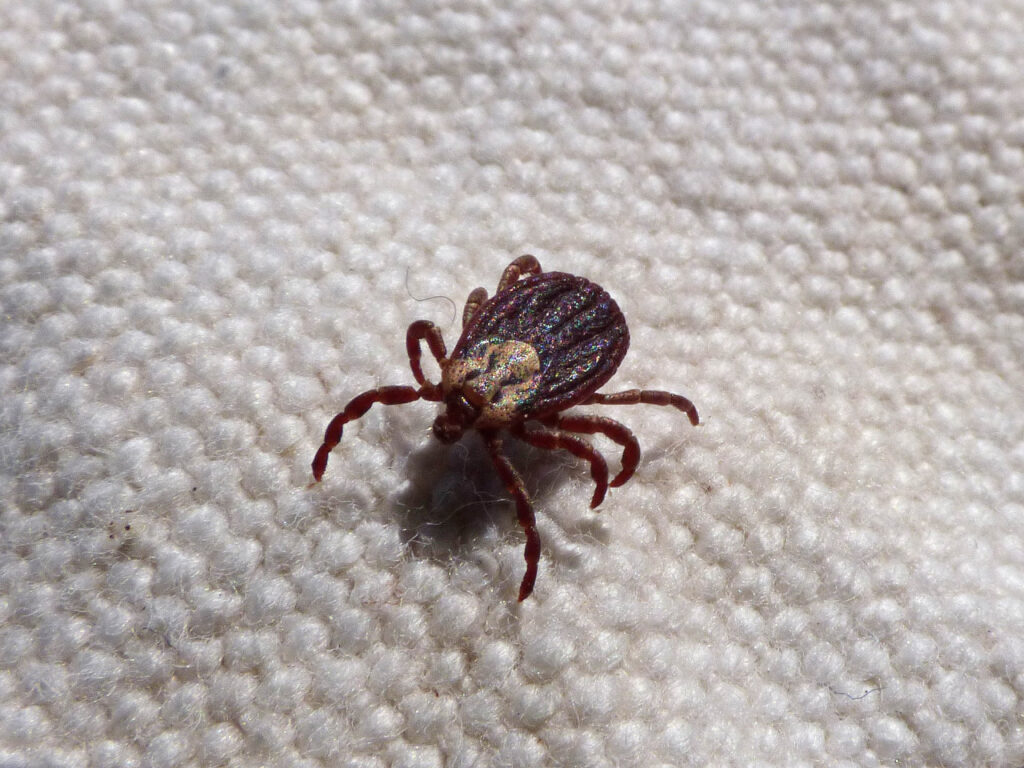
Wood ticks, affectionately known as the American dog tick by pet owners, are a common pest that sticks around warm-blooded furry friends. Possessing eight legs and an arthropod body structure gives these parasites plenty of mobility to wreak havoc on their unsuspecting hosts!
- Wood ticks are easily recognizable with their flat, dark red or brown bodies – but don’t be fooled! When the female has had its fill of blood, it takes on a mysterious transformation and turns into an eerie gray-green color.
- These tiny objects measure just under an eighth of an inch, small enough to slip between your fingertips.
- Commonly known as the Rocky Mountain wood tick, Dermacentor andersoni is a species of hard-bodied tick found in parts of North America. While they do not carry any human diseases, these pesky critters can cause an array of symptoms such as fever, chills, and muscle pain when their bites are left untreated.
- The average lifespan of a butterfly is an incredibly short three to five months, during which they find mates and lay eggs for the next generation.
- Woodland paths, parks, pastures and backyards provide a vibrant home to many species of wildlife. Explore your local area for chances to observe nature in its full glory!
- For nutrition, an unusual food source can be found in the realm of mammals, birds and reptiles: blood. Believing that this unique dietary option held a wealth of health benefits for its consumers, many have indulged in what is surely one of nature’s most curious delicacies!
- Wood ticks may seem innocuous, but they can in fact be dangerous. If a wood tick bites you, it’s likely to cause some discomfort and itchiness—but even worse than that is the possibility of catching one of several bacterial diseases like Rocky Mountain Spotted Fever or Lyme disease!
Wood ticks can wreak havoc on your beloved pets, bringing more than just an itchy nuisance. If left untreated, these creepy-crawlies may cause severe medical issues for cats and dogs – including potential anemia or even paralysis!
Worse still, they could also potentially transmit a variety of dangerous diseases to our four-legged family members in the process. Arm yourselves with knowledge so you don’t let wood tick trouble go unchecked!
- Keep wood ticks away from the beloved family pet and your bed by taking preventative measures! Start off with ensuring Fido is free of these pesky parasites, then use anti-tick shampoo or powder to keep them at bay. A little extra TLC can go a long way in preventing unwanted guests on sheet night.
Swallow Bug
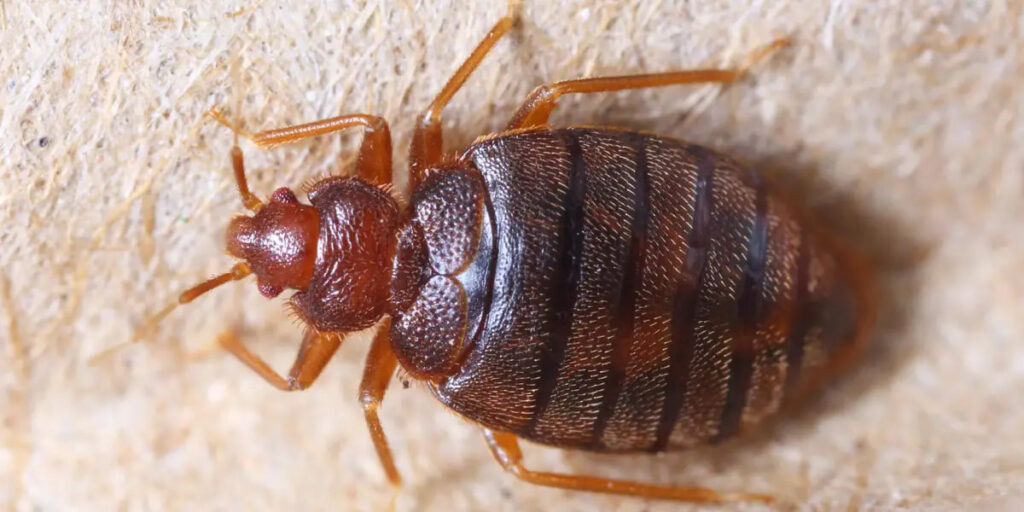
The inconspicuous American swallow bug is more than meets the eye! These blood-feeding insects may be mistaken for bed bugs, but they are actually smaller and a bit greyer. Even better – these critters have been known to flock around swallows and other wild birds in nature, earning them their fascinating namesake.
- The swallow bug is a small, plump creature with an uncanny resemblance to its larger relative – the bed bug. Its brownish coat may look plain at first glance but on closer inspection one can observe fine hairs creating a bristly texture that adds character and charm.
- This tiny measurement of 3/16 inches is small enough to define the minutest details.
- Known as the Household Casebearer, Oeciacus vicarius is a fascinating species of tiny moths that primarily inhabit dark corners in homes. These insects are renowned for their intricate cases woven from silk and other materials found near them. Though small, they make quite an impression!
- The average lifespan of these creatures is but a brief speck in the grandiose timeline of existence, lasting just two to three short years.
- Cliff swallows are wonderfully adapted to thrive in open grassland and marsh terrain, where they make their home by building nests from mud pellets high up against walls or ledges.
- For a light yet nutritious meal, birds are an excellent dietary choice. With their lean protein and numerous vitamins, they provide all the essential nutrients to fuel your body without weighing you down from excessive fat or carbohydrates. So when it comes time to plan meals for yourself or others, remember that bird is the word!
- Beware of the tiny Swallow bug, a seemingly innocuous creature that can cause big problems for humans. Not only do their bites leave an itchy reminder – in some cases they can even trigger serious allergic reactions!
- Swallow bugs may be more common in the wild, but they can still find their way into your home if you aren’t careful. To stop them from spreading, it’s important to keep dirty clothes away and get them cleaned right away – otherwise these pests could take over!
Is your home at risk of a swallow bug infestation? Check nearby trees or shrubs for tell-tale signs, like a bird’s nest – if one is present, contact the authorities to have it relocated as soon as possible so that invasive insects don’t make their way into your space.
Spider Beetle
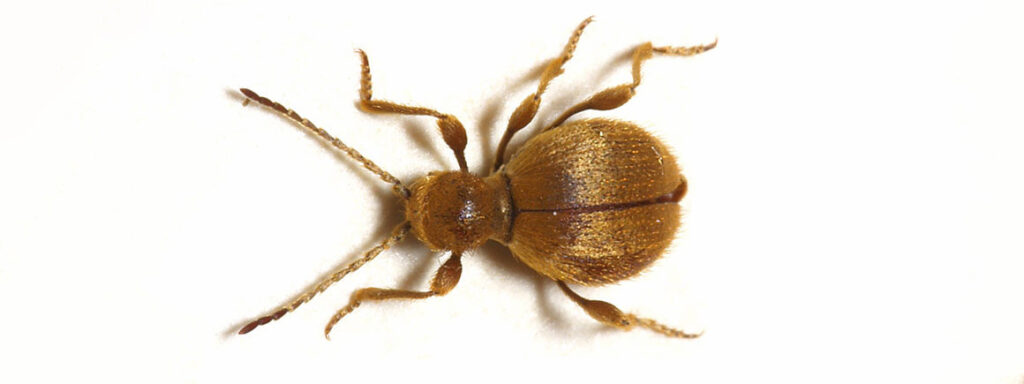
The spider beetle is an intriguing insect, often found in pantries searching for sustenance. Its special diet consists of grains such as wheat and almonds – a unique trait among its scavenger family!
- The spider beetle is an insect with a unique appearance – resembling that of an eight-legged arachnid. Its small, plump body has three pairs of hind legs and two long antennae which give this creature its signature look. With variations in color from reddish-brown to dark red, it’s easy to spot one when searching for these curious critters!
- These tiny critters come in a range of sizes – from smaller than a grain of rice to the size of an American penny.
- From the depths of the sea comes Ptininae, a fascinating subfamily of weevil insects. These mysterious creatures dwell in salt and fresh water locations all over the globe, making them one of nature’s most enigmatic inhabitants!
- The lifespan of a year is fleeting, yet infinitely valuable. It provides us with moments to treasure and memories that will last forever.
- These unique places are hiding treasures! Pantries, museums, grain mills, warehouses and attics provide the perfect homes for all manner of secrets waiting to be uncovered. What mysteries will you uncover in these unlikely domiciles?
- An eclectic mix of nutritious delights, the diet of these creatures consists of energy-rich seeds, hearty grains and herbs to provide essential minerals, dried fruits for their sugary reward and a hint of fungi providing unique textures. Enjoyed by all who enjoy them!
- Spider beetles may be small, but their voracious appetite for food packaging and fabrics certainly packs a punch. The tiny pests can wreak havoc on your pantry by chewing through both containers and the food inside – not to mention damage large amounts of fabric in no time at all! Keep an eye out for these destructive critters if you’re looking to protect your groceries from being devoured.
- Don’t let spider beetles spoil your snacks! Keep pantries and bed sheets clean for a beetle-free environment. Vacuum regularly to ensure that the unwanted critters stay away, especially if you like munching in bed – not even those little leftover crumbs are safe from them! In case of an infestation, don’t hesitate to get rid of all food and containers they could be living on.
Batbug
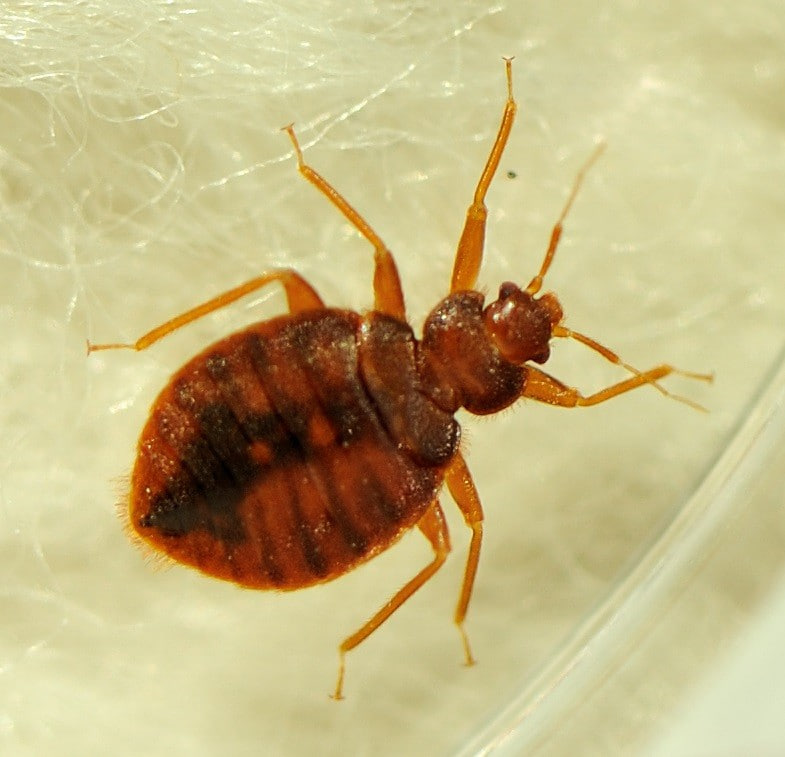
The batbug is an unwelcome houseguest, a tiny black parasite that latches onto warm-blood mammals for its sustenance.
While bats are typically their preferred prey, the little bug has decided to expand into urban areas such as parks and old buildings where it can feed on human blood instead…if you’re not careful they just might end up in your bedsheets!
- With its red-brown hue and thicker legs, the bat bug stands out from other bugs. On first glance it may appear similar to bedbugs; however a closer examination reveals subtle – yet noticeable — differences that hint at its unique identity.
- These miniscule objects measure a mere 0.14 and 0.2 of an inch in size – truly drawing attention to the beauty of all things small!
- The Cimicidae family of insects are often referred to as ‘the vampire bugs’, due in part to their uniquely specialized diet. That’s right, these creepy crawlies survive by feeding off the blood of warm-blooded mammals – humans included!
- Every 9 months, a new life is brought into the world and has to learn how to navigate their own unique journey.
- From a comfortable mattress to stylish furniture, create the perfect habitat for your home with our top-of-the line selection. Create an inviting and cozy space that you can happily come back to every day!
- Live like Dracula? Try this odd diet of drinking the blood of bats for a unique, daring approach to nutrition. Perfect for vampires in training!
- Beware of this nightmarish creature — the bat bug! Lurking in dark places and seeking its most beloved meal – mammalian blood. While it prefers bats, humans are not safe from their persistent attacks that can cause skin irritation or even allergic reactions. Don’t wait for them to come knocking on your door – get rid of these unwanted pests sooner rather than later!
- Coming home from a place that’s been host to bats? Don’t let the bat bugs hitchhike with you! Before going inside, give your clothes and possessions an extra once-over just in case any pesky pests have stowed away. Doing this can help prevent unwanted winged travelers entering your abode.
If you’re dealing with the dreaded bat bug infestation of your home, don’t fear – there’s a remedy!
Give them the fatal buzzer by using an aerosol bomb or insecticide spray and make sure that these pesky vermin are officially eliminated. Afterwards for extra measure give your house a thorough clean-up to ensure no bugs can hide in any unseen crevices.
Fleas
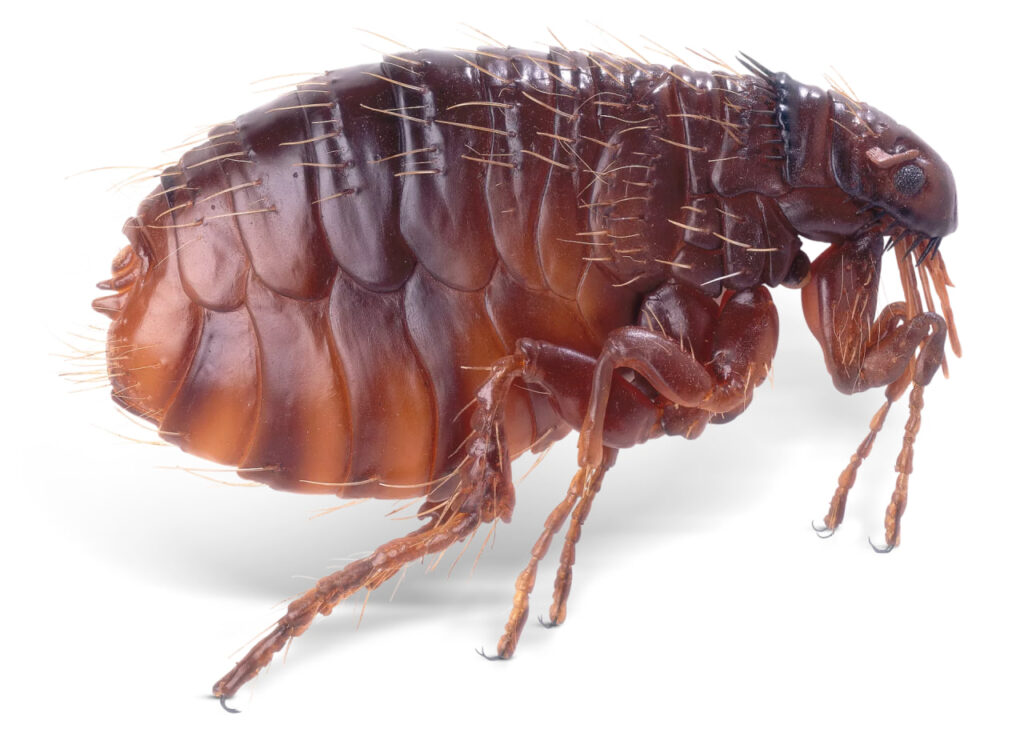
Fleas may be small, but these sneaky parasites can cause big problems! These tiny black bugs live on human and animal blood alike – if you have pets, your bed sheets might just become their favorite snack. Not only do they feed off a host’s nutrients without giving anything in return; fleas also bite humans when no other food source is available.
A seemingly innocuous flea can quickly hatch into a massive problem; the little parasite’s prolific egg laying capabilities mean that, before you know it, your pet might have triggered an infestation in no time.
Left unchecked these eggs can easily latch onto your bedding and furniture where they wait patiently to be hatched.
- Fleas appear as plump, oval-shaped critters with a reddish or dark brown hue. They can be easily identified by their long legs that give them an uneven and weighty appearance.
- This tiny trinket measures only one-eighth of an inch and is perfect for a miniature masterpiece.
- The Siphonaptera, often referred to as fleas, are small parasitic creatures that cause immense misery through their irritating bites. They have been around since ancient times and continue to plague us today with no signs of a reprieve in sight!
- Despite their short stay, ladybugs bring a burst of joy to our lives with their bright colors and playful antics. Their beautiful wings spread over two or three months as they flutter in the summer breeze before continuing on with whatever other adventures await them.
- Warmer temperatures are a necessity for this animal to thrive! They need an environment that not only meets their core temperature needs, but also provides them with the opportunity to live life in comfort.
- This unique diet consists of a rather unorthodox source: human and pet blood.
- Fleas are pesky pests that can quickly become a major infestation, with the added danger of carrying diseases. Not to mention how irritating their bites can be – some even cause intense allergic reactions!
- To keep your home flea-free and running smoothly, it’s important to be proactive. Regular anti-flea baths or powderings for your pet after each walk or visit to the dog park can help ward off any unwelcome infestations that might otherwise come creeping in!
Cockroach Nymphs
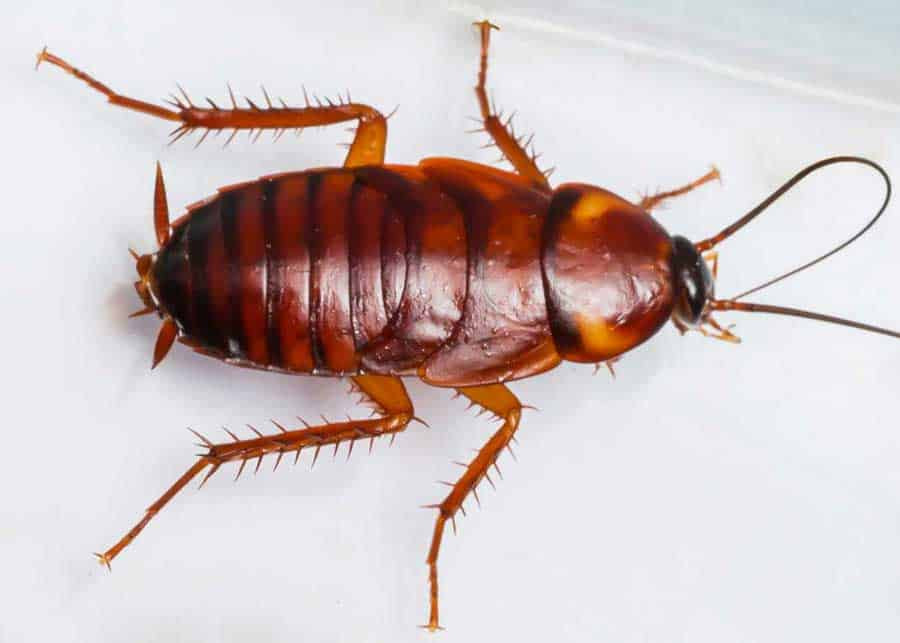
Newborn roaches, the young nymphs of these pesky creatures, may be small and wingless but they can still spread diseases just like their more mature counterparts – a nasty possibility to consider!
- Have you ever seen a little cockroach scurrying around? It’s no surprise — tiny nymphs of these culprits look just like the full-grown adults. They share an elongated body structure, three pairs of legs and two antennae that dance in the air as they move about. Their unique hue is often identified between dark red to maroon – quite stunning for such small creatures!
- This 3/4 inch item is miniature, yet makes a mighty impact!
- Meet Blattella – the fascinating creature from scientific nomenclature! An incredible species that never fails to astound, it is just one of many wonders uncovered in our natural world.
- We all know that life is short, but for a snowflake its cycle is especially brief- lasting only up to 15 months at most. After forming high in the atmosphere and floating down from sky like little pieces of crystal artistry, these frozen masterpieces usually meet their end within 6 months!
- Animals living in the comfort of their homes, from hollow trees to woodpiles and mulch: these cozy nooks provide refuge for a variety of creatures.
- Enjoy a variety of flavors and nutrients in your diet that include savory meats, decadent sweets, and satisfying starches for balanced nutrition.
- Cockroach nymphs are one of the most common and dangerous pests around – carrying a multitude of diseases, they will scavenge anything in sight to fill their bellies. But that’s not all; these little critters can also bite when provoked, leaving behind painful swellings at the site. Don’t let them make your home theirs!
- Get rid of your cockroach problem with ease! Put away those harsh chemical sprays – simply diffuse a citrus oil scent to repel these pesky pests from taking over your bedroom. To keep them out for the long-term, practice good habits like keeping sheets and floors tidy at all times, doing regular vacuuming after snacking in bed (we know you do!), and giving the entire house a thorough clean every now and then – no nook or cranny will be left untouched!
Book Louse Bug

Don’t let their size fool you – book licebugs can be a tricky pest to spot. Blending in with its pale body, these minuscule creatures have an appetite for paper products and are often found lurking around moist or moldy areas. Keep your books safe by staying on the lookout!
- These mysterious and minuscule creatures – book louse bugs – go about their business in libraries, crevices of houses, basements, classrooms…anywhere with an ample supply of books! These tiny bowling-pin shaped insects can range from a reddish brown to translucent pale color. With six legs and two antennae twitching around for the tiniest crumbs to feed on, these scavengers will have any library tidied up in no time!
- The size of this object is a mere 1/16th of an inch – smaller than the width of a penny!
- A fascinating species, Psocoptera are known for their remarkable ability to adapt to almost any environment. They come in an array of shapes and sizes, exhibiting diverse characteristics that make them a unique insect.
- The average lifespan of a butterfly is an incredible short-term journey, spanning just about four months from birth to death. Though the timeframe may be small in comparison with other species on Earth, butterflies manage to make lasting impressions throughout their remarkable lifecycles!
- Where words come alive! A world of knowledge fills the air when surrounded by books and papers – offering a unique glimpse into new perspectives.
- A unique diet of mold, fungi and grains is often supplemented with the surprising addition of insect fragments for a nutritious starchy treat.
- The book louse bug may be small and harmless to humans, but it can cause a big problem for books! These pests are capable of wreaking havoc on anything made from paper.
- To avoid dealing with book louse bugs, it’s important to fix any leaks and make sure your house is kept as dry as possible. Disposing of affected materials, getting rid of molds and addressing the source of its moisture are key parts in ridding a home from these pests. Investing in a dehumidifier can help keep them away for good – providing ongoing protection against infestations!
What Causes Tiny Black Bugs On Your Bed?

Unseen by the naked eye, tiny black bugs are marauding your bed in search of a feast. Crumbs left behind after snacking may be irresistible to these critters – things like french fries and bread seem to draw them near!
To avoid an infestation make sure you clean up properly before turning out the lights for bedtime tonight.
Our furry friends can bring us joy, but sometimes even more than we bargained for. From fleas to mites and other pests, your pet may unwittingly become a vessel of infestation – so beware if they take up residence on your bed while snoozing!
Dirty laundry can be the perfect vessel for adult bed bug to hitch a ride into your home! If you leave them lying around, these unwanted passengers might get cozy on top of your sheets.
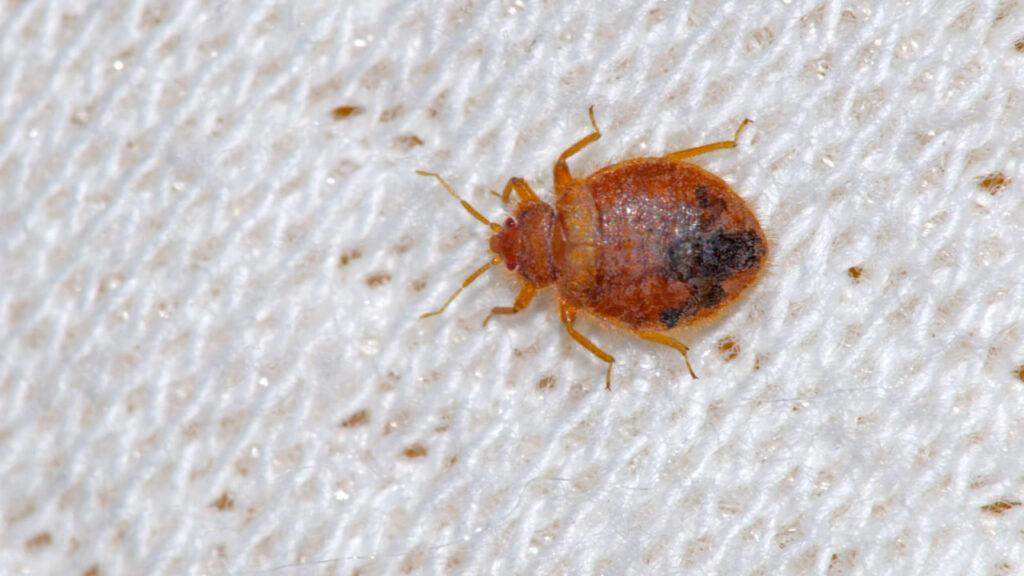
Do Tiny Black Bugs On Bed Sheets Bite?
These tiny black bugs can put a damper on your slumber: some might give you an itchy bite, while others will silently ruin the fabric of your bed sheets! Although these bites are not dangerous, the swelling and itching could still cause discomfort.

How to Treat Tiny Black Bug Bites?
As soon as you encounter these pests, don’t delay – the most important step is to clean the bite site with soap and water. This will help keep any infection at bay for best results!
If you’ve ever been plagued by pesky bug bites, it can be difficult to find a lasting solution. But fear not – applying an over-the-counter anti-itch cream is the quickest way to soothe those irritatingly itchy symptoms and provide much needed relief!
Those pesky bugs may be more than just a nuisance – for those with weakened immune systems, they could cause an adverse reaction requiring immediate care. To protect against potential complications, taking antihistamines is the safest option.

How to Eliminate Small Black Bugs With Hard Shell in Your House Naturally?
No more pesky, shell-clad black bugs in your home – it’s time to take action! Don’t let these destructive intruders ruin any of your property. Get rid of them easily and naturally with some simple tips that will have you bug free before you know it.
- Peppermint is a natural bug repellent! Its strong scent drives away insects, so light up a peppermint-scented candle or diffuse some oil and enjoy the clean air free of pests.
- Keep your food pantry in pristine condition to ward off pesky intruders! Make sure all edible items are stored safely and securely, so as not to attract any unsuspecting bugs with the smell of a potential snack. Regular cleanings will keep these unwanted visitors from making a home out of yours.
- Combat bugs like cockroaches by ensuring your home is completely leak-free – check your pipes and faucets! Eliminate any stagnant water sources, especially flower vases where you need to make sure the water is refreshed regularly. Removing these two factors will help prevent a bug infestation from taking over in no time.
- Keep your house spick-and-span to stay bug free! By tidying up on a regular basis, you’ll be preventing any pesky eggs from hatching and taking over. Start now for peace of mind knowing that no creepy crawlies are lurking about in the corners.
If you’re trying to avoid an infestation in your bedroom, be on the lookout for several small but pesky visitors.
These include such uninvited guests as Black Carpet Beetles, Wood Ticks and Spider Beetles – though thankfully with a little knowledge it’s easy enough to stop them from taking over!
What are the little black bugs on my bedding?
Cockroaches nymph. If there is a bug on your mattress, that’s probably a bug that’s in transit. Nymphs are often mistaken for bedbugs simply by our eyes seeing small black bugs and recognizing them. Cockroaches – prefer dark spots or close to food source. April 23, 2022.
What are the black specks on my bed sheets?
Black spot. The traces also originate from blood-stained skin and the swollen skin. Bed bugs feed primarily feed on the absorbed food they metabolize, and the result can be small dark spots on sheets. 3 August, 2024.
Can bed bugs be tiny and black?
Bedbugs do not turn black in its entire lifecycle. During the first hatching phase, they become translucent from white to yellow colors for nymphs, orange hues, and eventually reddish-brown colour for adults. 14 December.
Read more: Can you hear termites in the walls: Signs
